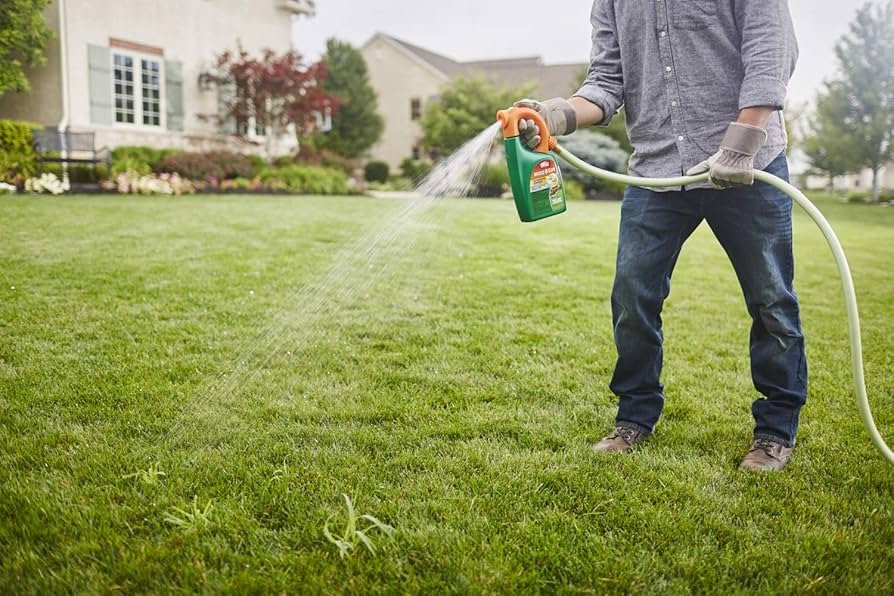Crabgrass is a pesky, fast-spreading weed that thrives in backyard gardens and lawns, competing with desirable plants and turfgrass. It flourishes in bare patches of soil and under heat stress, making it especially prevalent during the warmer months. Left unchecked, crabgrass can dominate a landscape, turning once-healthy lawns into unattractive, weedy messes.
Fortunately, there are highly effective products designed to kill or prevent crabgrass before it takes over your yard. From pre-emergent formulas that stop seeds from sprouting to post-emergent solutions that attack the weed at the root, these products come in a variety of formulations suitable for different lawn types and environmental conditions. Choosing the right one is key to maintaining a lush, weed-free lawn.
In this article, we break down the 14 best crabgrass killers and preventers on the market today. We also explain how they work, what ingredients to look for, and when and how to apply them for maximum effectiveness. Whether you’re a seasoned gardener or just trying to rescue your backyard from an invasion, this guide will help you reclaim your green space.
Understanding Crabgrass
What Is Crabgrass?
Crabgrass is an annual grassy weed known for its low-growing, spreading habit. The two most common species in the U.S. are large crabgrass (Digitaria sanguinalis) and smooth crabgrass (Digitaria ischaemum). These weeds flourish in warm climates and can produce thousands of seeds in just one growing season, making them notoriously difficult to control once established.
This weed thrives in compacted, nutrient-poor soil and often colonizes bare or thin areas of your lawn. Its wide, light green blades create a patchy, unattractive appearance that stands out starkly from typical turfgrass. Because it grows so quickly, even a small patch of crabgrass can expand into a full infestation if not managed properly.
Understanding crabgrass’s growth cycle is key to controlling it. Unlike perennial weeds, crabgrass dies off in the fall but leaves behind seeds that sprout the following spring. That’s why a combination of prevention and active treatment is crucial—kill what’s visible and stop future growth before it begins.
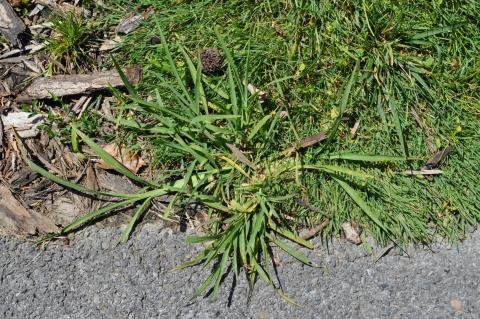
How Crabgrass Spreads
Crabgrass reproduces through prolific seed production. A single plant can produce up to 150,000 seeds in a season, and these seeds lie dormant in the soil until conditions are just right. As temperatures rise in spring, the seeds germinate in any open or disturbed soil, quickly filling in weak spots in your lawn.
Because it’s a warm-season annual, crabgrass typically germinates when soil temperatures reach about 55°F for a few consecutive days. This often aligns with early to mid-spring, depending on your climate. Once sprouted, crabgrass grows rapidly and spreads outward, crowding out desirable grass and creating thick mats of weed.
Beyond spreading by seed, crabgrass is resilient and can recover from mowing or light herbicide treatments if not completely killed. This makes early detection and thorough treatment essential. It also highlights why using both pre-emergent and post-emergent controls as part of a comprehensive lawn care plan is necessary.
The Difference Between Killers and Preventers
Crabgrass control products fall into two main categories: pre-emergents and post-emergents. Pre-emergent herbicides work by forming a chemical barrier in the soil that prevents crabgrass seeds from germinating. These are most effective when applied in early spring before the weed has a chance to take root.
Post-emergent herbicides, on the other hand, are designed to kill crabgrass that has already sprouted. These treatments target the weed’s foliage and root system, typically using selective chemicals that don’t harm established turfgrass. They’re most effective when the crabgrass is still young and small, ideally before it has matured and seeded.
To effectively manage crabgrass, many gardeners use a combination of both product types. Pre-emergents serve as a preventive measure, while post-emergents are used for spot treatments or when prevention has failed. Understanding the timing and proper use of each can greatly enhance your success in keeping crabgrass at bay.
The 14 Best Crabgrass Killers and Preventers
1. Scotts Halts Crabgrass & Grassy Weed Preventer
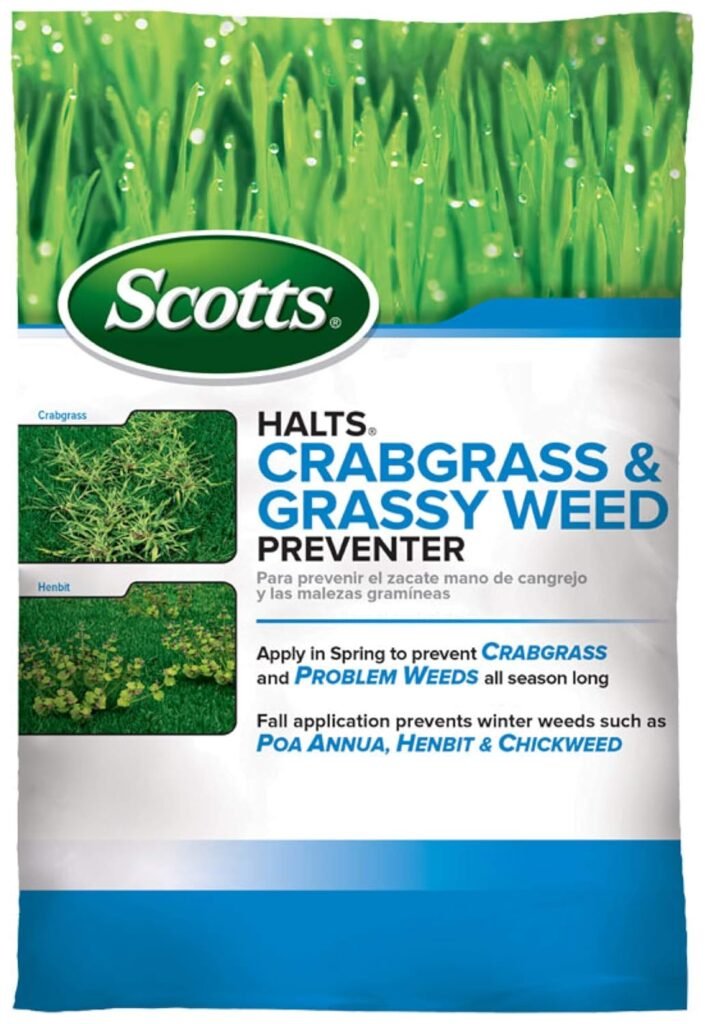
Scotts Halts is a trusted pre-emergent herbicide that provides season-long crabgrass control. It’s easy to apply using a broadcast spreader and works best when applied in early spring before the soil temperature hits 55°F. This product prevents not just crabgrass but also other grassy weeds, making it a convenient, all-in-one solution for homeowners.
The granular formula is rainproof and won’t be washed away by unexpected spring showers, which helps ensure effectiveness. However, it’s not designed to kill existing crabgrass, so it’s not suitable as a rescue treatment for already-infested lawns. Instead, it excels as a preventive barrier when used as part of an annual lawn care regimen.
Homeowners appreciate its ease of use and compatibility with most turf types. For best results, apply Scotts Halts when the forsythia bushes start blooming or when soil temperatures are consistently above 50°F. Reapplication may be necessary in areas with extended growing seasons or heavy rainfall.
2. Tenacity Herbicide
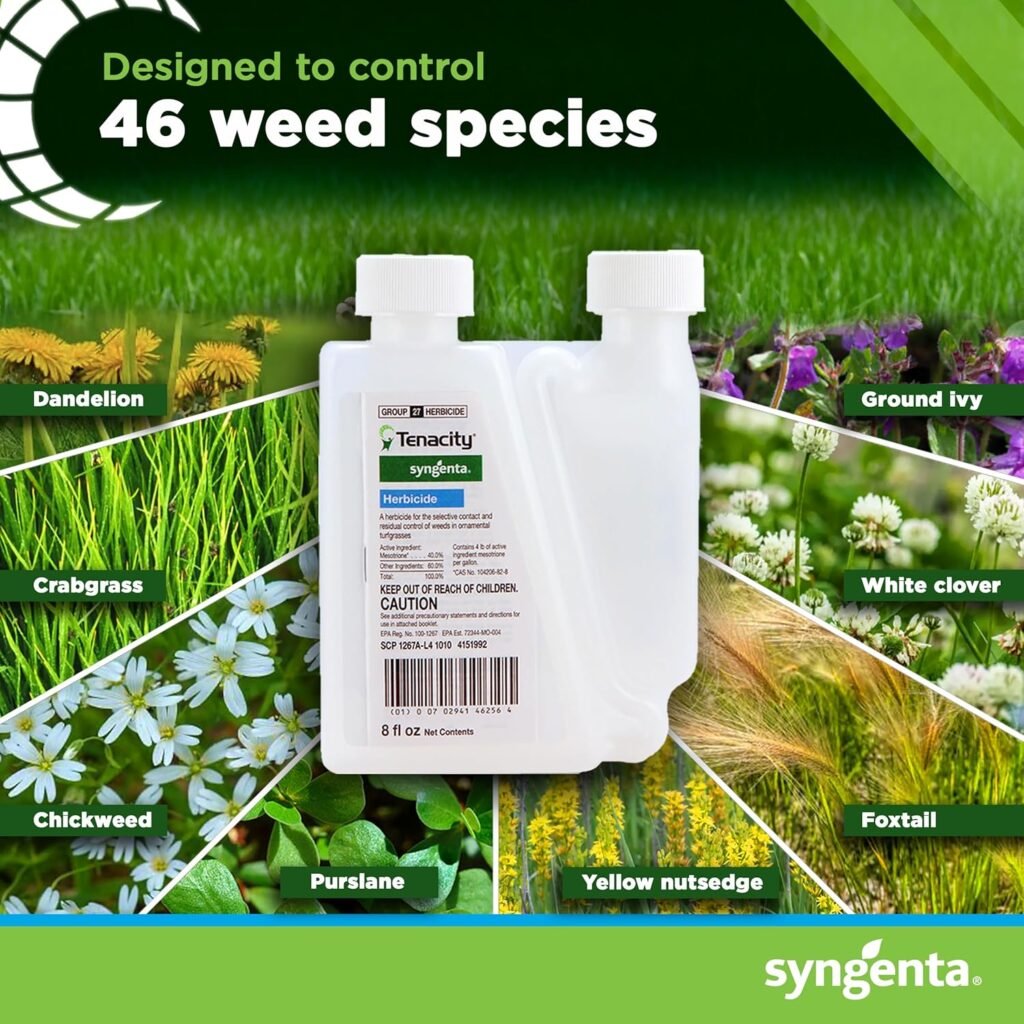
Tenacity is a powerful, selective herbicide that serves both pre-emergent and post-emergent functions. It’s highly effective against crabgrass and a wide range of broadleaf and grassy weeds, making it a popular choice among professionals and experienced gardeners. The main ingredient, mesotrione, disrupts photosynthesis, ultimately killing the weed from the inside out.
It can be used on both new and established lawns and is safe for a variety of cool-season grasses like Kentucky bluegrass, fescue, and perennial ryegrass. Tenacity is often mixed with a surfactant to increase its effectiveness as a post-emergent. It’s ideal for targeting newly germinated crabgrass or preventing it during seeding.
While it’s a bit more expensive than other options, its versatility and performance make it a top contender. Results typically appear within 2–3 weeks, with weeds turning white before dying off. Be sure to follow the instructions carefully, particularly when using on new lawns, to avoid unintended stress on desirable grass.
3. Ortho Weed B Gon Plus Crabgrass Control
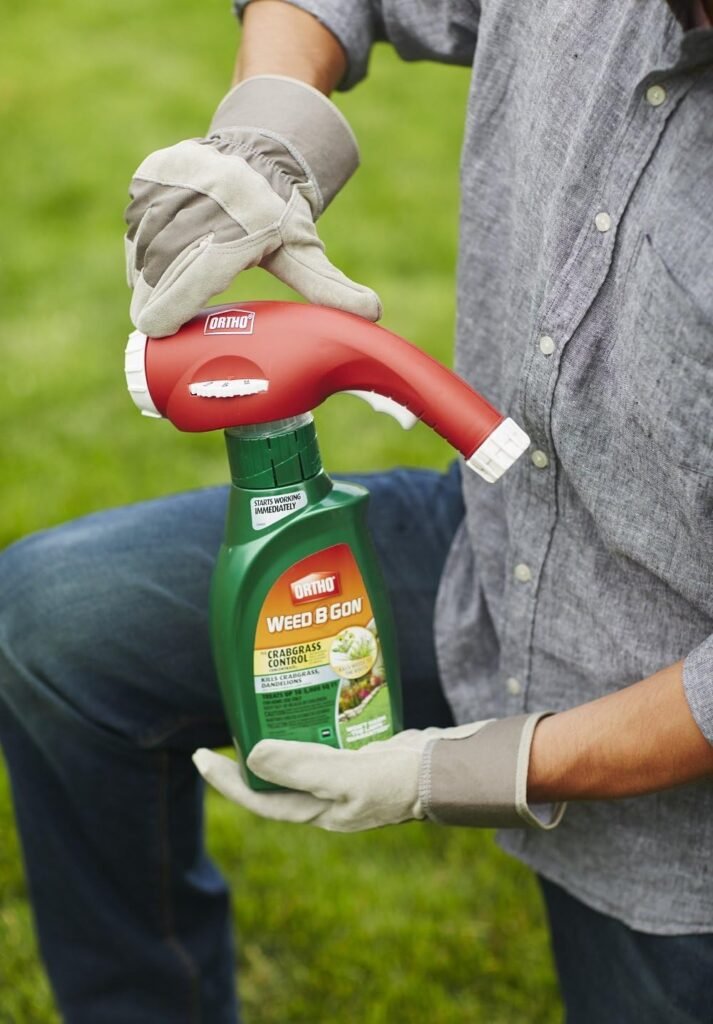
Ortho Weed B Gon is a popular post-emergent herbicide designed to kill existing crabgrass and over 200 other lawn weeds. It contains quinclorac, which is especially effective against mature crabgrass, making it a go-to for summer applications when the weed is already visible and spreading.
This product is safe for most northern grasses when used as directed, and its ready-to-spray bottle connects easily to a garden hose for even application. It’s rainproof within an hour, allowing for quick treatment even if unpredictable weather is on the horizon. The convenience and broad-spectrum weed control make it a favorite among busy homeowners.
However, it’s not recommended for use on southern grasses like St. Augustine or centipede grass. For the best results, apply to moist grass on a calm day when temperatures are between 60°F and 90°F. Repeat treatment may be necessary for large infestations or particularly stubborn weeds.
4. Green Light Amaze Grass & Weed Preventer
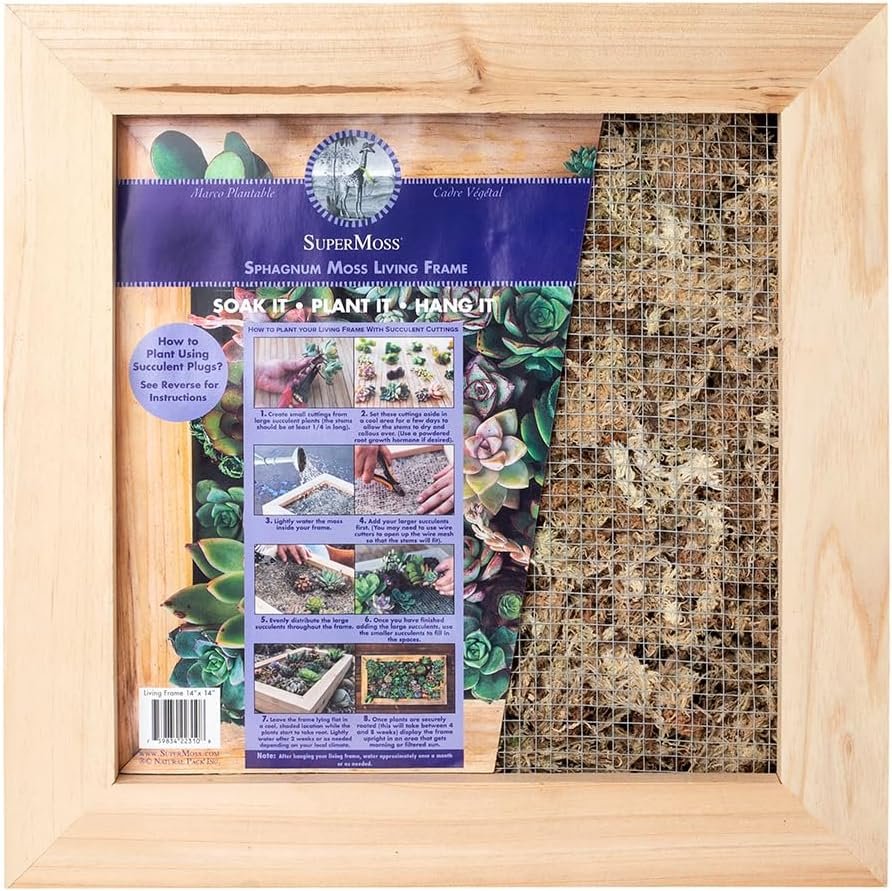
Green Light Amaze is a granular pre-emergent herbicide that offers broad-spectrum prevention against crabgrass and many other grassy and broadleaf weeds. It’s ideal for early spring applications and works well for a variety of warm-season grasses, including Bermuda and zoysia.
This product is appreciated for its ease of use—simply spread and water in. The effectiveness lasts for several months, offering extended protection during the peak growing season. It’s particularly useful in warm climates where multiple flushes of crabgrass germination may occur.
While it doesn’t target already-sprouted weeds, its strength lies in reliable prevention. It’s best used as part of a multi-step weed control plan and should be reapplied as directed for season-long results. Always check compatibility with your specific turfgrass before use.
5. Dimension 2EW Herbicide

Dimension 2EW is a professional-grade pre-emergent herbicide with some post-emergent capabilities, thanks to its active ingredient dithiopyr. It’s favored by landscapers and lawn care pros for its broad coverage and long-lasting performance.
This liquid formula is ideal for large areas and can be tank-mixed with other treatments for a customized lawn care regimen. It prevents crabgrass and over 40 other weeds, and it can control young crabgrass plants up to the 3-leaf stage, giving you a bit of wiggle room on timing.
Though it’s more technical to apply than granular options, Dimension 2EW offers superior control when applied correctly. It’s rainfast once dry and should be applied with care to avoid overlap or overuse, which could stress your lawn. Perfect for experienced users looking for maximum efficiency.
6. Spectracide Weed Stop for Lawns + Crabgrass Killer
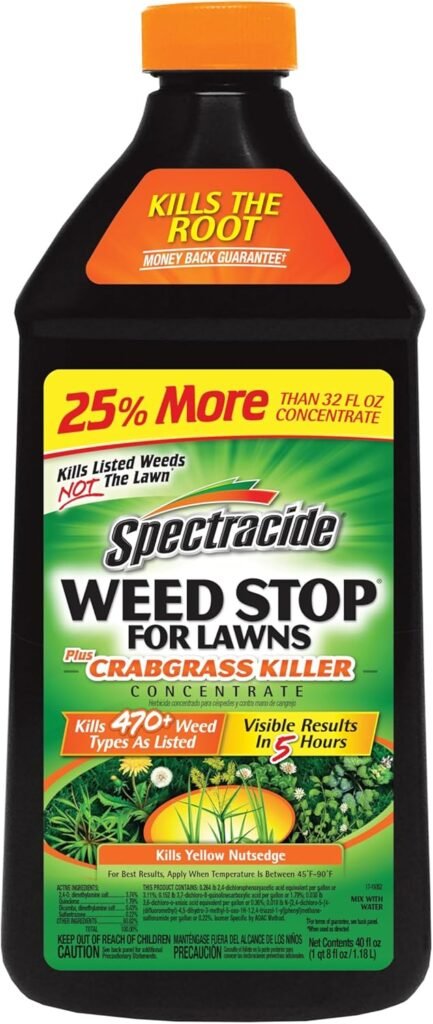
Spectracide’s dual-action formula targets both visible weeds and hidden crabgrass invaders. Designed as a post-emergent spray, it contains quinclorac and other selective herbicides that attack crabgrass without harming most common lawn grasses.
It’s packaged in a convenient hose-end sprayer that covers up to 5,000 square feet, making it an excellent choice for quick, widespread applications. Within hours, it begins penetrating the weed, and most results are visible within a week. Its rainproof feature activates 3 hours after application.
Keep in mind that repeated applications may be necessary for heavily infested lawns. This product is not safe for use on St. Augustinegrass, centipedegrass, or dichondra lawns. When applied correctly, however, it’s an affordable and efficient choice for summer crabgrass control.
7. Bonide Crabgrass & Weed Preventer
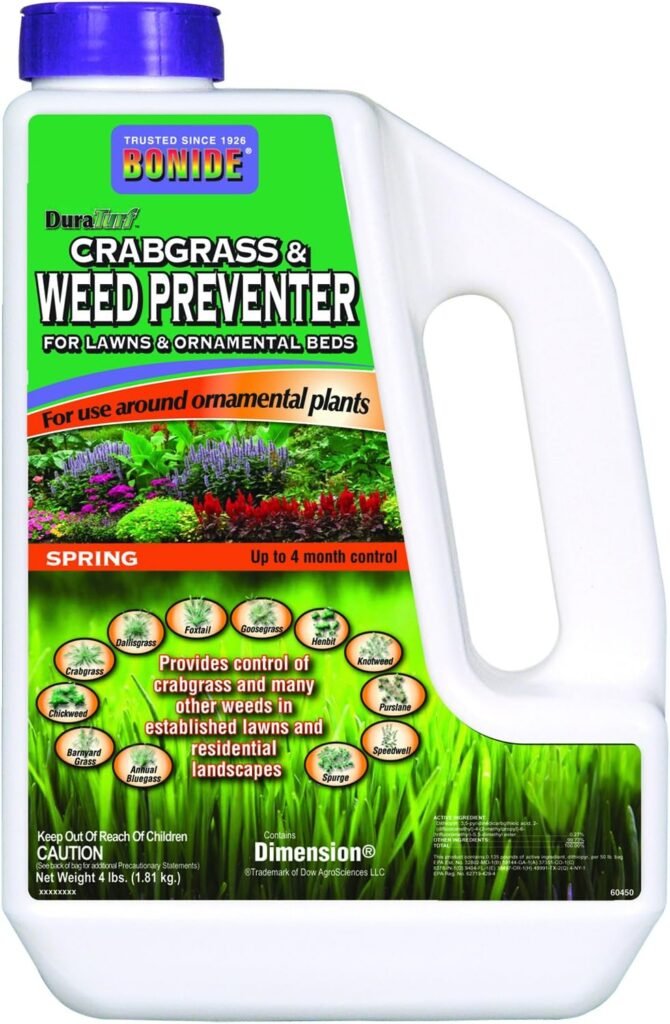
Bonide’s granular pre-emergent herbicide features the active ingredient Dithiopyr, making it ideal for controlling crabgrass before and shortly after germination. It’s suited for use on both cool- and warm-season grasses, offering versatile prevention with early spring application.
The product provides up to four months of protection, making it a strong choice for gardeners who want a low-maintenance solution. It’s easy to apply with a standard spreader and needs to be watered in after application to activate the barrier. Results are often noticeable within a few weeks as crabgrass fails to sprout where applied.
One standout feature is its effectiveness in high-traffic areas, where crabgrass often finds footholds. Just be sure to avoid reseeding for several months after use, as pre-emergents like this can prevent all seed germination, including new grass seed.
8. Preen Lawn Crabgrass Control

Preen is a well-known name in the weed prevention world, and their Lawn Crabgrass Control product lives up to the brand’s reputation. It uses the active ingredient Dithiopyr and is designed to prevent crabgrass and more than 20 other grassy and broadleaf weeds.
It’s best applied in early spring before crabgrass germination begins. The granular formula is simple to apply and offers up to four months of protection, making it a great seasonal solution. This product is especially useful for people who prefer proactive lawn care.
While Preen doesn’t kill existing weeds, it does an excellent job of stopping new ones before they start. It’s important to follow watering guidelines post-application to ensure effectiveness. If applied too late, you may need to pair it with a post-emergent product.
9. Jonathan Green Crabgrass Preventer + Green-Up Fertilizer

This dual-purpose product from Jonathan Green combines a pre-emergent herbicide with a high-quality lawn fertilizer, offering both weed prevention and turf nourishment in a single application. It’s ideal for homeowners looking to simplify spring lawn maintenance.
The active ingredient, Dithiopyr, controls crabgrass before and just after germination. Meanwhile, the fertilizer helps strengthen your grass, making it more competitive against invasive weeds. This synergy creates a healthier lawn that naturally resists future crabgrass invasions.
Use a broadcast spreader for even application and be sure to water it in thoroughly. The product’s balanced NPK ratio supports vigorous spring growth, making it a time-saving option for busy gardeners who want visible improvement in both weed control and lawn health.
10. GreenView Fairway Formula Spring Fertilizer + Crabgrass Preventer
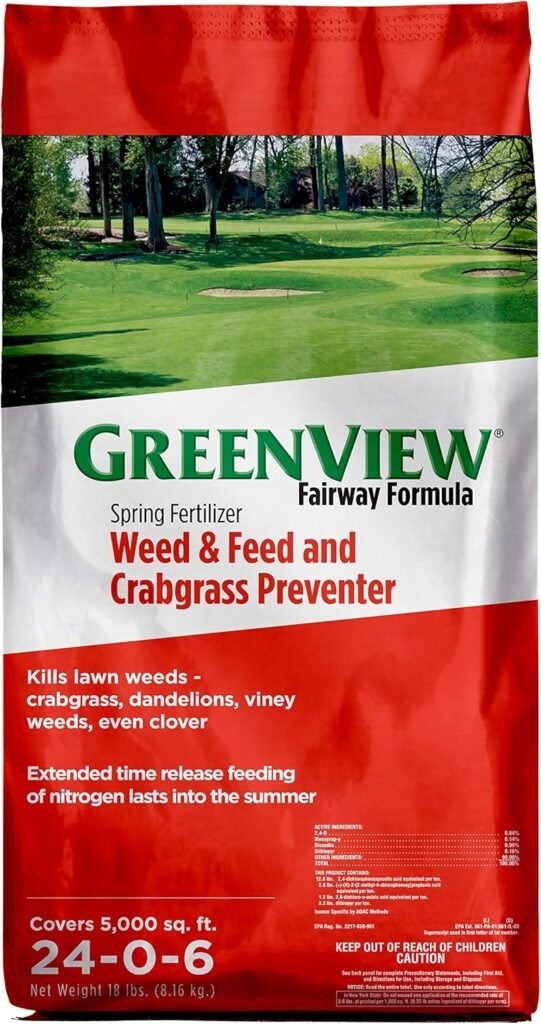
GreenView’s Fairway Formula is a high-performance combination product that includes a nitrogen-rich fertilizer and a powerful pre-emergent herbicide. The active ingredient, prodiamine, provides long-lasting prevention against crabgrass, making this an excellent choice for those who want to start their season with a solid foundation.
One of the product’s key benefits is its extended protection—up to four months of crabgrass control with one application. The added fertilizer promotes deep root development and lush green growth, helping your lawn fill in bare patches that could otherwise invite weeds. This makes it a great option for gardeners looking for both beauty and practicality.
The granular formula is easy to spread with a broadcast spreader and should be watered in after application. It’s safe for most common turf types, but it’s always good practice to check the label for any restrictions. The dual-action benefit of weed prevention and lawn nourishment makes GreenView a popular pick among homeowners and professionals alike.
11. Spectracide Weed Stop for Lawns Plus Crabgrass Killer
This Spectracide product is a post-emergent herbicide that targets over 470 weed types, including crabgrass, without harming your lawn. It’s designed for use on cool- and warm-season turfgrasses and is particularly effective on newly sprouted crabgrass that hasn’t yet gone to seed.
One of its biggest advantages is the fast action. Results can be seen within hours, with crabgrass showing signs of yellowing and dieback shortly after application. It comes in a ready-to-spray hose-end bottle for easy application, making it user-friendly for homeowners who don’t want to fuss with mixing or special tools.
However, this product doesn’t prevent future crabgrass growth, so it’s best used in conjunction with a pre-emergent earlier in the season. If you’ve missed the window for prevention and need to knock out visible crabgrass quickly, Spectracide is a reliable and effective option.
12. Roundup for Lawns Crabgrass Destroyer1

Roundup, known for its broad-spectrum weed killers, offers a lawn-safe product specifically formulated to target crabgrass. The Destroyer1 formula uses quinclorac, which is highly effective against both large and small crabgrass plants, as well as other common lawn weeds.
This product is selective, meaning it won’t harm your grass when used as directed, making it ideal for spot-treating infested areas. It comes in a ready-to-use spray bottle, which is great for precision application. Homeowners appreciate the quick visible results and the convenience of not needing a sprayer or hose attachment.
Roundup for Lawns Crabgrass Destroyer1 works best on actively growing crabgrass and is most effective when applied during warm weather. It’s a solid post-emergent option that helps clean up your yard without disrupting your lawn’s appearance or health.
13. Espoma Organic Weed Preventer
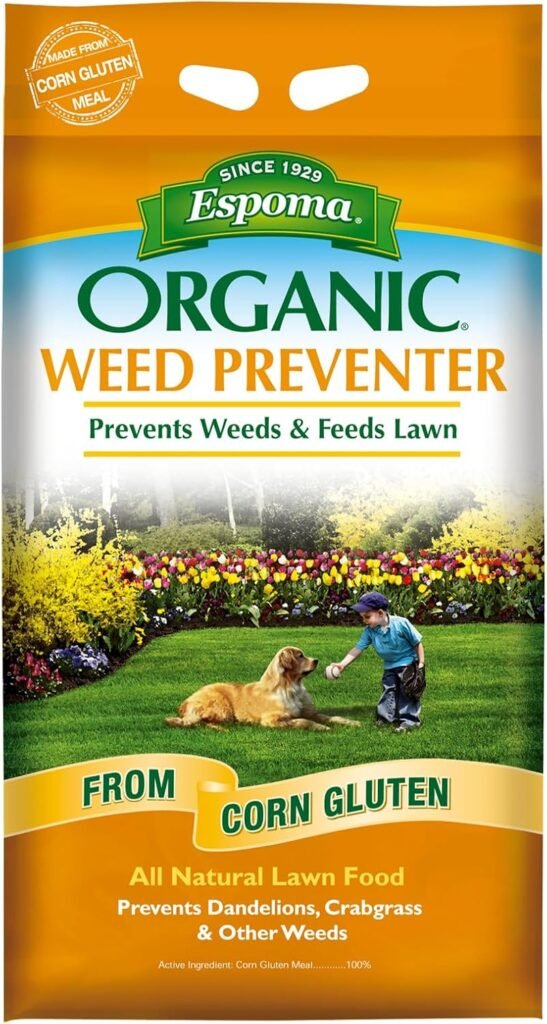
Espoma’s Organic Weed Preventer is a natural alternative to chemical pre-emergents. Made from corn gluten meal, it offers a safe and eco-friendly way to suppress weed growth—including crabgrass—while also feeding your lawn with organic nitrogen.
Because it doesn’t contain synthetic chemicals, it’s safe for use around pets and children, making it an attractive option for families. While it’s not as potent as synthetic products, consistent seasonal application can build up its effectiveness over time. It’s especially useful for gardeners looking to maintain organic or low-impact landscapes.
Apply in early spring and water lightly to activate. Espoma’s product also enriches the soil, promoting stronger grass growth that can crowd out weeds naturally. If you’re transitioning to a chemical-free lawn care routine, this is a great product to start with.
14. Southern Ag Atrazine St. Augustine Weed Killer
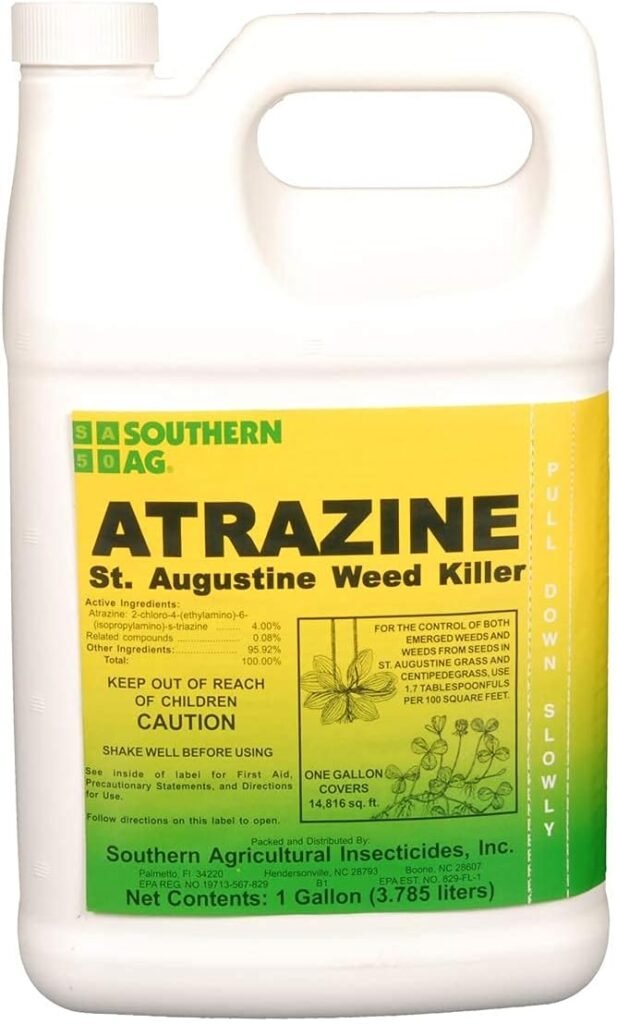
Designed specifically for southern grasses like St. Augustine and centipede grass, Southern Ag’s Atrazine product is both a pre-emergent and post-emergent herbicide. It’s one of the few crabgrass solutions safe for these sensitive turf types, making it a go-to choice in warmer climates.
Atrazine works by inhibiting photosynthesis in the target weed, leading to its gradual death. It can be used to control crabgrass, as well as other broadleaf and grassy weeds, and is best applied when temperatures are below 85°F to avoid stress on the lawn. This versatility makes it useful for both early-season prevention and mid-season correction.
It’s a concentrated liquid that requires dilution and careful application with a sprayer. While not the easiest product for beginners, those familiar with lawn care will appreciate its targeted effectiveness and the protection it provides for southern turf species.
Buyer’s Guide: What To Look For in a Crabgrass Killer or Preventer
Key Ingredients to Know
Several active ingredients are commonly used in crabgrass preventers and killers. Dithiopyr is a widely used pre-emergent that also offers early post-emergent control, making it a versatile choice. Prodiamine is another popular pre-emergent that provides season-long prevention with a single application if timed correctly.
For post-emergent treatments, quinclorac is a top performer. It’s especially effective against mature crabgrass and often combined with other weed-killing agents for broader control. Organic solutions, such as corn gluten meal, offer an eco-friendly pre-emergent alternative, though results may vary and require consistent application.
Knowing what’s in your product helps you avoid overlaps, resistance issues, or damage to your lawn. Always read the label to confirm compatibility with your grass type, whether it’s cool-season or warm-season turf. Ingredients also determine the reapplication window, watering schedule, and effectiveness in varying climates.
Factors to Consider
When choosing a crabgrass control product, consider the type of lawn you have. Some herbicides are not safe for certain grass types like St. Augustine or bentgrass. Make sure the product label lists your grass as compatible to avoid unintended damage.
Next, consider safety for pets and children. While many chemical herbicides are safe once dried, others require longer waiting periods. Organic options like corn gluten meal may be safer but often less effective in heavily infested areas. Your choice may depend on whether you have frequent backyard foot traffic.
Climate and soil type also affect product performance. Sandy soils may require more frequent applications, while clay soils might hold chemicals longer. Rainfall patterns, temperature, and local growing seasons will influence whether you need to reapply mid-season or just once annually.
Application Method
Crabgrass products come in either granular or liquid form. Granular types are typically easier to apply with a spreader and are well-suited for large areas. They work well as pre-emergents when watered in immediately after application to activate the chemicals in the soil.
Liquid formulations often require a hose-end or tank sprayer and provide better coverage for spot treatments. They’re especially useful for post-emergent applications, allowing you to precisely target visible crabgrass without affecting the rest of your lawn. Some come pre-mixed, while others need dilution and careful handling.
Ease of use, coverage area, and application equipment should guide your choice. Beginners may prefer ready-to-spray products, while experienced gardeners might opt for concentrates to save money and tailor treatments. Either way, follow instructions closely to ensure optimal results and avoid damaging your grass.
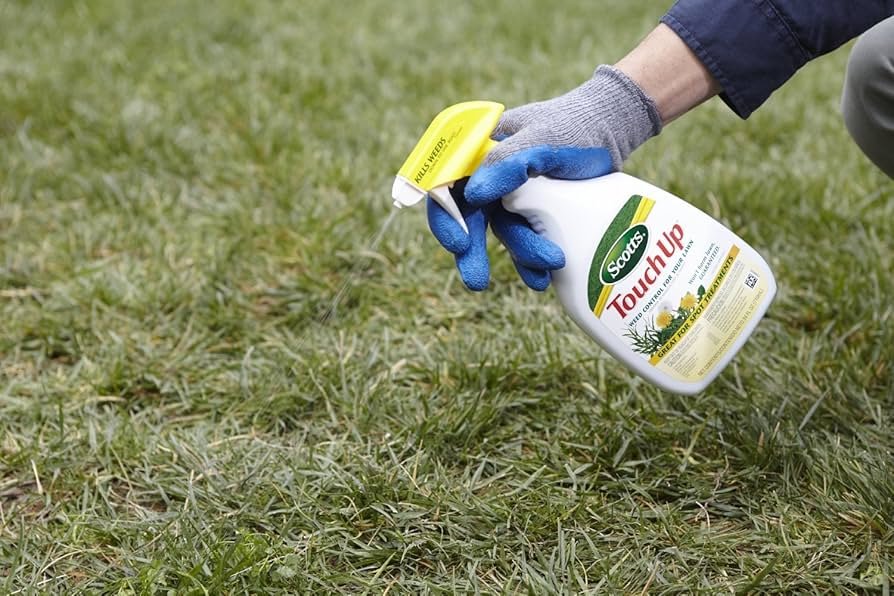
Tips for Application and Lawn Recovery
Timing Is Everything
The effectiveness of crabgrass control largely depends on timing. Pre-emergents must be applied before crabgrass seeds germinate—typically in early spring when soil temperatures reach around 55°F. Many gardeners use blooming forsythia bushes or soil thermometers as natural indicators for when to apply.
Post-emergents are most effective when applied to young, actively growing crabgrass. Once the weed matures, it becomes harder to kill, and repeat applications may be necessary. Avoid mowing the lawn right before applying post-emergent products, as you want as much leaf surface area as possible for the chemical to absorb.
Also, pay attention to weather conditions. Avoid applying herbicides just before rain or watering unless the label instructs otherwise. Some products need to sit on the leaf surface for hours, while others must be watered in to activate. A little planning ensures your efforts aren’t washed away.
Watering and Mowing Guidelines
Proper watering after application can significantly affect your results. Granular pre-emergents typically require watering in to form the protective barrier in the soil. On the other hand, post-emergents often need dry conditions for a few hours after application to penetrate leaf surfaces effectively.
Mowing practices also play a role in crabgrass control. Avoid mowing too short, as this can stress your turf and allow sunlight to reach weed seeds. A higher mowing height promotes denser grass, which shades the soil and reduces the opportunity for crabgrass to take hold. Always mow with sharp blades to avoid damaging healthy grass.
During the recovery phase after treatment, resume regular watering to help your lawn bounce back. If bare spots appear where crabgrass was removed, consider overseeding with the appropriate grass seed to prevent new weeds from filling the gap. This promotes thicker turf that resists future infestations.
Lawn Recovery After Treatment
After using crabgrass killers, especially post-emergent herbicides, your lawn may experience some stress. Yellowing, thinning, or browning can occur, particularly if the chemical was applied in hot weather or at too high a concentration. This is usually temporary, but it’s important to support your lawn during recovery.
Fertilize the lawn lightly a few weeks after treatment to encourage new growth and help your turfgrass recover from chemical stress. Choose a balanced, slow-release fertilizer and avoid heavy feeding, which can actually promote weed growth if the turf is still thin. A healthy lawn is your best defense against crabgrass.
Regular maintenance is essential. Aerate compacted areas in the fall, overseed when necessary, and address any drainage or shade issues that may encourage weed growth. With a little care and patience, your lawn can rebound from crabgrass infestations and become stronger than ever.
Wrapping Up
Crabgrass may be persistent and aggressive, but with the right tools and timing, you can successfully keep it out of your backyard garden. The key lies in choosing a treatment tailored to your lawn type, understanding when and how to apply it, and maintaining a healthy turf that naturally resists weed invasion.
From powerful chemical formulas like Tenacity and Drive XLR8 to eco-friendly options like corn gluten meal, there’s a solution for every level of gardener. Whether you’re preventing a future outbreak or tackling an existing invasion, our list of the 14 best crabgrass killers and preventers can help you reclaim your outdoor space.
Don’t let crabgrass take control. Use the knowledge and recommendations shared in this guide to create a lush, beautiful lawn that’s the envy of the neighborhood—and one that’s finally free of those stubborn invaders.

